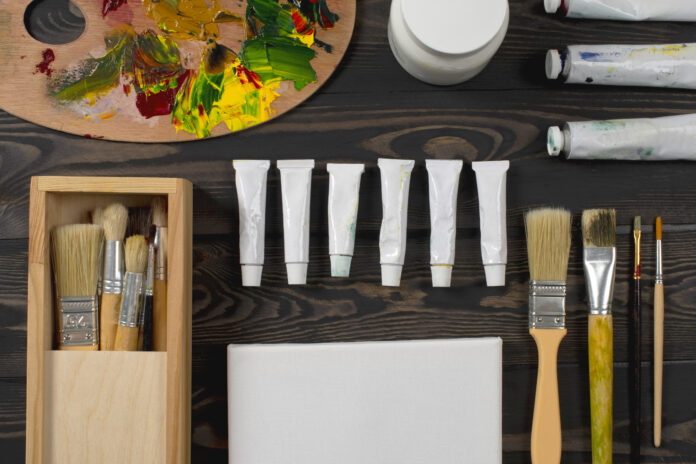Introduction
- Best Painting Tools for a Professional Finish
- Choosing the Ideal Paint Brush for Different Paint Types
- Top Brush Shapes for Specific Applications
- Understanding Roller Nap and Its Impact on Finish
- Best Roller Covers for Different Paint Types
- Key Prep Tools for a Perfect Surface
- Precision Tools for Edges and Details
- Best Brushes for Textured and Faux Finishes
- Using Sprayers for a Flawless, Even Coat
- Cleaning Brushes and Rollers for Extended Use
- Storing Brushes and Rollers for Future Projects
- Conclusion
When it comes to painting projects, having the best painting tools and choosing the right paintbrushes can make all the difference. Quality tools not only enhance the finish but also make the entire process smoother and more enjoyable. Whether you’re refreshing your walls, cabinets, or exterior, using the right tools will ensure professional-looking results with less effort. In this guide, we’ll dive into essential painting tools, from the best brushes to high-performance rollers, and provide top recommendations for achieving a seamless paint finish.
Best Painting Tools for a Professional Finish

Using the best painting tools can significantly improve the quality and efficiency of your project. From high-quality brushes to versatile rollers, choosing the right tools will help you achieve a professional-looking finish with ease. For example, synthetic bristle brushes are perfect for smooth application with water-based paints, while natural bristle brushes excel with oil-based products, offering superior control and even coverage. Additionally, foam rollers are ideal for a smooth finish on cabinets and doors, whereas thick-nap rollers provide excellent coverage on textured walls or ceilings. By investing in the right tools, you’ll save time and get polished results on any surface.
Choosing the Ideal Paint Brush for Different Paint Types
When it comes to choosing brushes, the material of the bristles is critical. Synthetic brushes, typically made from nylon or polyester, are ideal for water-based paints like latex. They maintain their shape well and provide a smooth finish. On the other hand, natural bristle brushes, often made from animal hair, work best with oil-based paints as they can handle the thicker consistency of these paints.
For each type of paint, having a brush that holds and distributes paint evenly will make the process more efficient and reduce the number of brushstrokes needed, giving your project a more professional appearance.
Top Brush Shapes for Specific Applications
Different areas require specific brush shapes for a smooth finish. Flat brushes work well for large, even surfaces like walls, while angled brushes are perfect for corners, trims, and other detailed work. Round brushes are great for narrow spaces and intricate designs. Choosing the right shape will ensure precision, especially in areas like corners or trims where a steady hand and defined lines are essential.
Understanding Roller Nap and Its Impact on Finish
Roller nap, or the length of the roller fibers, can significantly impact the texture of the paint finish. For smooth walls and ceilings, short-nap rollers (1/4 to 3/8 inch) are ideal because they apply a thin, even layer of paint. On textured walls or surfaces like stucco, a thicker nap roller (3/4 to 1 inch) will provide better coverage and ensure the paint reaches into every crevice. Knowing which roller to choose based on surface texture will make the application easier and more effective.
Best Roller Covers for Different Paint Types
Roller covers, like brushes, come in synthetic and natural materials. For water-based paints, synthetic covers (like polyester) work best, while oil-based paints pair well with natural covers (often wool or mohair). Natural fibers absorb more paint, providing a more thorough application, while synthetic fibers are more durable and resistant to the wear from latex paints.
Key Prep Tools for a Perfect Surface
Preparation is key to a perfect paint finish, and having the right prep tools is essential. Sanding blocks or sandpaper help smooth out any imperfections on the surface, while putty knives allow you to apply spackle or caulk to fill holes and cracks. This step ensures your paint goes on smoothly and adheres well. Tape is also essential to protect areas that won’t be painted, providing clean, crisp lines around edges and trim.
Precision Tools for Edges and Details
Getting clean lines around trims, moldings, and edges can be challenging without the right tools. Angled brushes provide the control needed for detail work, while trim edgers are specifically designed to make painting around tight corners easier. Pairing these tools with high-quality painter’s tape ensures that every line is clean and professional-looking.
Best Brushes for Textured and Faux Finishes
Specialty brushes, like stippling or fan brushes, are perfect for adding texture or creating faux finishes on your walls. These brushes have unique shapes and bristles designed to produce different effects, from a simple textured look to more intricate designs. They allow you to personalize spaces with patterns and textures that add depth and interest.
Using Sprayers for a Flawless, Even Coat
For large surfaces, a paint sprayer can deliver a quick, flawless coat without visible brushstrokes or roller marks. Airless sprayers are ideal for exterior projects or larger areas, while high-volume, low-pressure (HVLP) sprayers provide more control and are great for cabinetry or smaller projects. Sprayers require a bit of technique, but they can create an ultra-smooth, professional look, especially on wood and metal surfaces.
Cleaning Brushes and Rollers for Extended Use
Taking care of your brushes and rollers can save you time and money on future projects. Synthetic and natural bristle brushes require different cleaning methods—warm, soapy water works well for latex paint on synthetic brushes, while mineral spirits are ideal for oil-based paint on natural bristles. Cleaning rollers thoroughly after each use helps maintain their texture and prevents clumping, which can affect future applications.
Storing Brushes and Rollers for Future Projects
Proper storage is essential for keeping your tools in good condition. Between coats, wrap brushes, and rollers in plastic wrap or airtight bags to prevent drying out. For longer storage, thoroughly clean and dry them before placing them in a protective case or cover. This practice will ensure that your tools are always ready for the next project and in the best possible condition.
Conclusion
Investing in quality brushes, rollers, and tools can significantly improve the quality and longevity of your paint job. By selecting the right tools for the type of paint, preparing surfaces thoroughly, and maintaining your equipment, you can achieve professional, flawless results on any project. Whether you’re a DIY enthusiast or a seasoned painter, these tools and techniques will help you reach a perfect finish every time.














